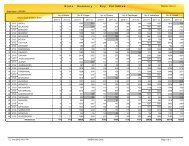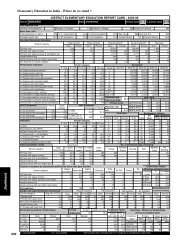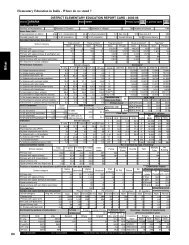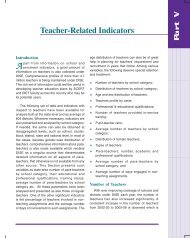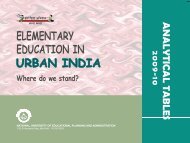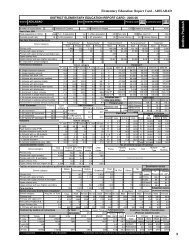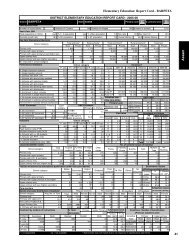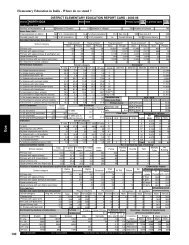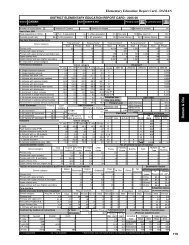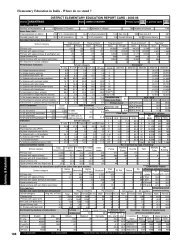Student Flow at Primary Level - DISE
Student Flow at Primary Level - DISE
Student Flow at Primary Level - DISE
- No tags were found...
You also want an ePaper? Increase the reach of your titles
YUMPU automatically turns print PDFs into web optimized ePapers that Google loves.
ForewordAt the time of independence, educ<strong>at</strong>ion in India used to be the privilege ofa few. Since then, concerted efforts have resulted in manifold increase inschools, teachers and students thereby increasing the outreach of elementaryeduc<strong>at</strong>ion in the country. In fact, the implement<strong>at</strong>ion of the externallyfunded primary educ<strong>at</strong>ion programmes in the early 1990s gave further fillipto efforts towards achieving the goal of universalis<strong>at</strong>ion of elementaryeduc<strong>at</strong>ion. The Sarva Shiksha Abhiyan (SSA) launched for the Universalis<strong>at</strong>ionof Elementary Educ<strong>at</strong>ion (UEE) has been fairly successful, among others, ininstitutionalizing decentralized planning and monitoring processes. Overthe years it has been recognized th<strong>at</strong> even with phenomenal expansion ofelementary educ<strong>at</strong>ion, the efficiency of primary and upper primary schoolscontinues to be low across St<strong>at</strong>es and UTs, thereby coming in the way ofachieving the goal of UEE. Accordingly, the SSA has envisaged acomprehensive monitoring system for all the four components of UEE.Although several <strong>at</strong>tempts have been made in the past to assess access,enrolment and learners’ achievement, little inform<strong>at</strong>ion is available on theinternal efficiency of primary and upper primary schools in the country.Very few studies have <strong>at</strong>tempted to look into all the indic<strong>at</strong>ors of internalefficiency, and none of these studies has so far examined the internalefficiency of primary educ<strong>at</strong>ion from a compar<strong>at</strong>ive perspective coveringall St<strong>at</strong>es and UTs. This report on student flow <strong>at</strong> primary level based on<strong>DISE</strong> d<strong>at</strong>a for 2004-05 and 2005-06, for the first time, <strong>at</strong>tempts to analyzethe indic<strong>at</strong>ors of internal efficiency covering the entire country. Not only isthe report unique in terms of its coverage of indic<strong>at</strong>ors but also in providinginsights into regional vari<strong>at</strong>ions in the performance of primary schools.The report acquires further significance in providing baseline performanceindic<strong>at</strong>ors for the purpose of monitoring the third component of UEE i.euniversal retention. I am sure this public<strong>at</strong>ion would serve as an importantreference m<strong>at</strong>erial for both research scholars and personnel engaged inplanning and management of elementary educ<strong>at</strong>ion in the country.I would like to appreci<strong>at</strong>e the hard work put in by the <strong>DISE</strong> Project Teamof the N<strong>at</strong>ional University led by Prof. Arun C. Mehta of the Departmentof Educ<strong>at</strong>ional Management Inform<strong>at</strong>ion System in bringing out thispublic<strong>at</strong>ionApril, 2007New Delhi(Ved Prakash)Vice-ChancellorN<strong>at</strong>ional University of Educ<strong>at</strong>ional Planning and Administr<strong>at</strong>ion




